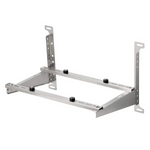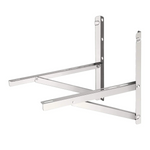Did you know that Americans spend about 90% of their time indoors? This makes indoor air quality a crucial factor in our health and well-being. Poor IAQ can lead to various health issues, including allergies, respiratory problems, and even long-term diseases.
Common Sources of Indoor Air Pollution
Here are some everyday sources of indoor air pollutants:
-
Cooking and Heating:
Gas stoves, furnaces, and fireplaces can release smoke and gases like carbon monoxide and nitrogen dioxide. -
Building Materials and Furniture:
New carpets, paints, and furniture can release chemicals (called volatile organic compounds, or VOCs) that may irritate your eyes or throat. -
Cleaning Products:
Many cleaners and air fresheners release chemicals into the air when used. -
Biological Sources:
Dust, pet dander, mold, and pollen can all make the air less clean. -
Outdoor Air:
Pollution from traffic or wildfires can sneak inside through open windows or cracks in your home. -
Your HVAC System:
If not maintained well, dust and debris can build up in your air filters and ducts, and then get blown back into your living space.
Easy Steps to Improve Your Indoor Air Quality
-
Replace Your HVAC Filters Regularly:
Change your air filters every 1 to 3 months (or as recommended) so that dust and other particles do not build up. A clean filter helps your system work better and keeps your air fresh. -
Clean Your Air Ducts:
Over time, ducts can collect dust and debris. Having them cleaned every few years helps remove these pollutants and improves your system’s efficiency. -
Improve Ventilation:
Open windows or use exhaust fans in the kitchen and bathroom to bring in fresh air and remove stale, polluted air. This is especially helpful when cooking or using cleaning products. -
Use Air Purifiers:
If your home is very tight or you have many pollutant sources, a portable air purifier with a HEPA filter can help remove dust, pet dander, and other particles from the air. -
Choose Low-VOC Products:
When buying paints, cleaning supplies, or new furniture, look for products labeled “low VOC” to reduce chemical emissions in your home. -
Install a Fresh Air System:
A fresh air system (also known as a mechanical ventilation system) continuously brings in filtered outdoor air while exhausting stale indoor air. This helps dilute indoor pollutants, maintains proper oxygen levels, and can even help control humidity—all without sacrificing energy efficiency. For homes that are very tightly sealed, a fresh air system is especially useful because it ensures a steady exchange of air, keeping your indoor environment healthier. Consult a professional to choose and install a system that fits your home’s needs.
In Short
By understanding where indoor air pollution comes from and taking a few simple steps—like replacing your HVAC filter, cleaning your ducts, improving ventilation, using air purifiers, and installing a fresh air system—you can make the air in your home healthier and easier to breathe.





